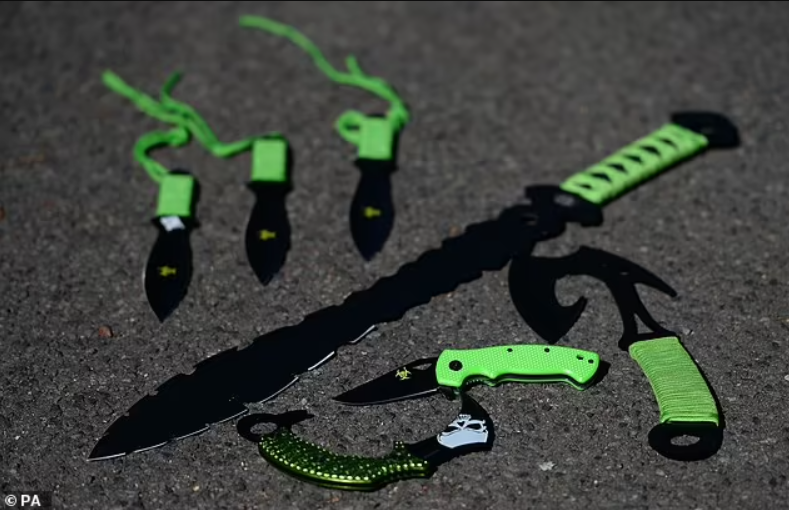History , types and models of a traditional tool
Hunting knives have accompanied humans since ancient times, serving as essential tools for outdoor life. Although their origins are linked to survival and the natural environment, their evolution has given rise to a wide variety of models with multiple uses, even beyond hunting.
I invite you to learn about the history of these knives, the most common types, and their characteristics.
Origin and history of hunting knives
The first hunting knives date back to prehistoric times , when humans made sharp stone tools to facilitate everyday tasks in the wild.
Over time, these tools were refined, and during the Bronze and Iron Ages, stronger and more durable metal knives began to be forged.
In the Middle Ages , European hunters carried specialized outdoor knives that were often also used by peasants, travelers, and soldiers, giving them a versatile character.
Its design was adapted to different regions and cultures, and with this, multiple variants emerged.
Today, modern hunting knives not only retain their traditional value, but are also used as camping, survival, and collection tools.
Types of hunting knives
There are different types of hunting knives depending on their design and functionality. Below, you'll find the most common ones.

Bowie knife
Inspired by the legendary 19th-century James Bowie, this knife features a large, wide blade with a curved tip.
It's one of the most iconic models, widely used by explorers and adventurers. Versatile, and useful for both cutting and defense.
Nowadays it is common in collections and outdoor activities.
(Photo of the Confederate Army Bowie Knife )

Fixed Blade Knife (Classic Hunting Knife)
Fixed-blade knives are very durable and have no moving parts. They are the most common type of knives and are often chosen for their durability.
With a sturdy blade, its handle and blade form a single solid structure, ideal for activities that require strength, such as skinning, cutting meat and field tasks.
(Photo of the Kershaw Lonerock Small Fixed Blade Hunting Knife, BC )

Folding knife (Hunting knife)
More compact, easier, and safer to carry, the folding knife features a folding blade, which stores inside the handle. It's less robust than a fixed blade, but practical for the casual hunter and ideal for hikers or campers.
Its modern design includes safety systems that prevent accidental opening.
(Photo of Hunting Knife with Liner Closure )

Skinning knife ( Skinner knife )
The skinner knife has a wide, curved blade with a rounded tip, designed to make precise cuts, allowing for easy skin separation without damaging the flesh. Although its historical use was highly specialized, it is now appreciated for its ergonomic design and its ability to handle general tasks in natural environments.
(Photo of the Skinner Masur Fixed Knife, Brusletto )

Spear Point Knife
With a symmetrical blade, sharpened on both sides, either completely or partially. It's a useful knife for piercing, although it's also often used as a finishing knife.
(Photo of the Gil Hibben Legacy Boot Knife with Spear Point and Leather Sheath )

Finishing knife (Big game hunting knife)
Its blade is long and narrow. Designed to deliver the final blow on the hunt, it's a high-penetrating knife, although it requires precision.

Drop point knife
The blade of this knife has a downward curve toward the tip, offering more control for precise tasks.
It is very popular among hunters for its versatility.
(Photo of the Ranger Bowie Knife, with Drop Point Blade and Deer Antler Handle )

Clip point knife
The tip of this hunting knife is thinner and sharper than the drop point, making it a better choice for precision tasks such as stabbing or cutting in tight areas, however, it is less durable than the drop point at the tip.
(Photo of the Mini, Clip Point, and Leather Collar knife)

Gut Hook
This knife features a sharp hook on the back of the blade. Used to open internal organs without cutting them, it complements other butchering tools.
(Photo of the Kershaw Lonerock Large Fixed Blade Hunting Knife with Gut Hook )
Multi-purpose knives and survival knives

Some modern pocket knives include additional tools such as scissors, files, or screwdrivers. They're perfect for exploring the countryside and performing small repairs or outdoor work, and popular with scouts and hikers.
Survival knives, on the other hand, are designed for emergency situations in the wild and often include a saw on the back, tool compartments, or emergency kits.
(Photo of the Officer's Knife, Swisschamp, Red )
None of these are specific to hunting, but they are useful for the environment.
Materials and styles
Hunting knives can be made of stainless steel , carbon steel , or even, in modern combinations, ceramic.
The handles, on the other hand, can be made of wood , horn , non-slip rubber or water-resistant synthetic materials .
The style of each knife varies according to the tradition of each country. For example, in Spain we find the traditional hunting knife , while in Nordic countries the knives stand out. Finnish puukko . But they all share a robust and functional aesthetic.
Collectible and educational knives
Many of today's hunting knives are made as collector's items, with artistic engravings and decorative finishes.
There are also educational versions and non-cutting replicas used for educational purposes or in historical exhibits.
It is important to emphasize that knives are not toys and should only be handled by adults or under adult supervision, especially in educational or recreational settings.
Hunting Knives, a legacy in constant evolution
Hunting knives are tools with a rich cultural and functional history. From their ancient origins to their modern use in outdoor activities, they have evolved in design and materials while retaining their practical and symbolic value.
There are multiple types and models for different needs, always respecting safety and responsibility in their use.










